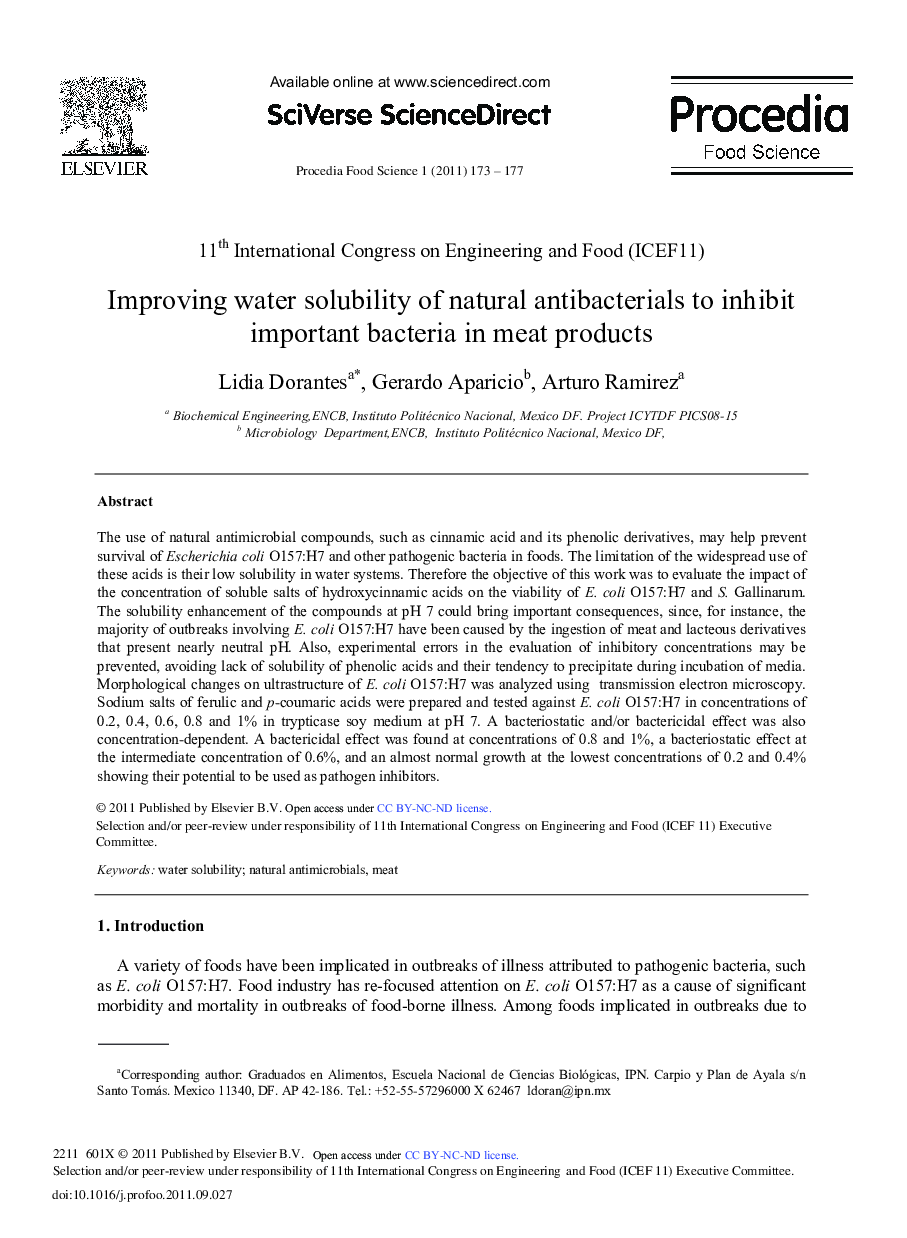| Article ID | Journal | Published Year | Pages | File Type |
|---|---|---|---|---|
| 1264935 | Procedia Food Science | 2011 | 5 Pages |
The use of natural antimicrobial compounds, such as cinnamic acid and its phenolic derivatives, may help prevent survival of Escherichia coli O157:H7 and other pathogenic bacteria in foods. The limitation of the widespread use of these acids is their low solubility in water systems. Therefore the objective of this work was to evaluate the impact of the concentration of soluble salts of hydroxycinnamic acids on the viability of E. coli O157:H7 and S. Gallinarum. The solubility enhancement of the compounds at pH 7 could bring important consequences, since, for instance, the majority of outbreaks involving E. coli O157:H7 have been caused by the ingestion of meat and lacteous derivatives that present nearly neutral pH. Also, experimental errors in the evaluation of inhibitory concentrations may be prevented, avoiding lack of solubility of phenolic acids and their tendency to precipitate during incubation of media. Morphological changes on ultrastructure of E. coli O157:H7 was analyzed using transmission electron microscopy. Sodium salts of ferulic and p-coumaric acids were prepared and tested against E. coli O157:H7 in concentrations of 0.2, 0.4, 0.6, 0.8 and 1% in trypticase soy medium at pH 7. A bacteriostatic and/or bactericidal effect was also concentration-dependent. A bactericidal effect was found at concentrations of 0.8 and 1%, a bacteriostatic effect at the intermediate concentration of 0.6%, and an almost normal growth at the lowest concentrations of 0.2 and 0.4% showing their potential to be used as pathogen inhibitors.
